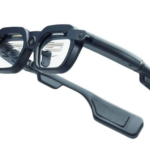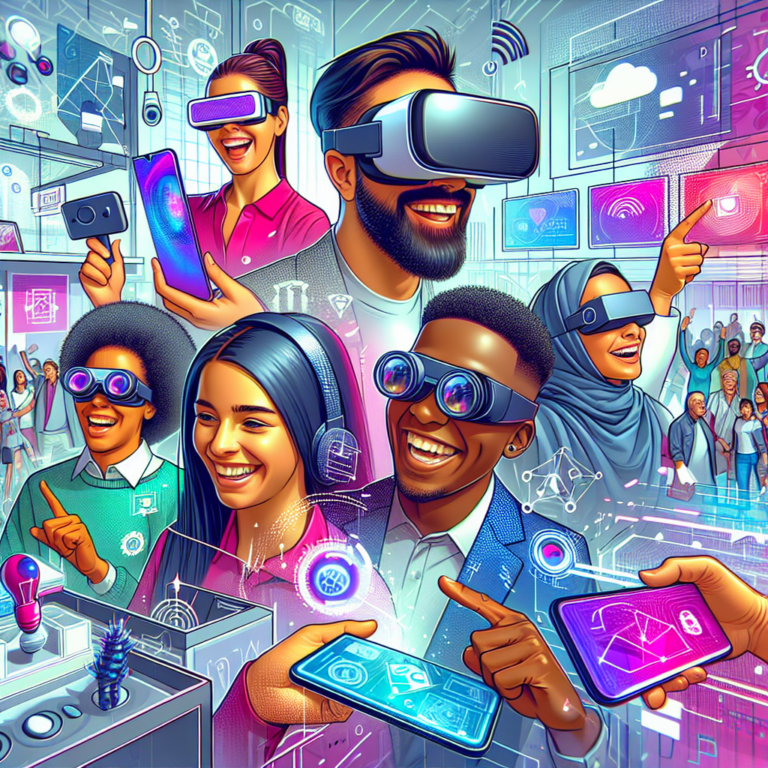Transforming Customer Engagement: The Power of Immersive Technologies 🌟
Introduction to Immersive Technologies
In today’s fast-paced digital landscape, businesses are constantly searching for innovative ways to captivate their customers. Among the most exciting advancements are immersive technologies such as Virtual Reality (VR), Augmented Reality (AR), and Mixed Reality (MR). These powerful tools not only enhance customer experience but also create lasting impressions that AI-driven marketing alone can’t achieve. Let’s dive into how these technologies are reshaping customer interactions and driving loyalty.
What Are Immersive Technologies?
Immersive technologies are digital tools that create interactive environments, allowing users to engage in a more profound and meaningful way. They transport customers to different worlds, providing unique experiences that traditional media cannot. Here’s a brief overview:
- Virtual Reality (VR): A fully digital environment that immerses users, blocking out the real world.
- Augmented Reality (AR): Superimposes digital elements onto the real world, enhancing the user’s view.
- Mixed Reality (MR): Combines VR and AR, allowing real and virtual elements to coexist and interact in real-time.
Why Customer Experience Matters
In the age of information overload, the customer experience (CX) can make or break a brand. Research indicates that customers are willing to pay more for a superior experience, and they are more likely to remain loyal to a brand that engages them effectively. By leveraging immersive technologies, brands can:
- Create memorable experiences that resonate with customers.
- Encourage deeper emotional connections with the brand.
- Improve customer satisfaction and brand loyalty.
Key Benefits of Leveraging Immersive Technologies
Let’s explore some key benefits of utilizing these innovative technologies in enhancing customer experience:
1. Enhanced Engagement
Immersive technologies allow brands to create interactive experiences that draw customers in. Whether it’s through a VR tour of a hotel, an AR app for trying on clothing or makeup, or interactive 3D product demos, these environments create a sense of excitement that captures attention.
2. Personalization
With AR and VR, personalization reaches new heights. Retailers can offer tailored experiences, such as:
- Customized product suggestions: By analyzing user preferences and behaviors.
- Virtual trials: Allowing customers to test products in a virtual environment that simulates their preferences.
This level of personalization builds a sense of connection and relevance, leading to increased purchasing confidence.
3. Reduced Return Rates
In e-commerce, product returns can be a drain on resources. Immersive technologies minimize this risk by offering detailed visualizations and try-before-you-buy experiences. Customers can see how furniture looks in their living room or how a dress fits their body type, effectively reducing the likelihood of returns.
4. Boosted Brand Awareness
Consumers are more likely to share immersive experiences on social media. When brands offer unique AR or VR experiences, it becomes share-worthy content, leading to:
- Increased exposure: More eyes on your brand as customers showcase their experiences.
- Organic engagement: Users feel part of a journey, fostering community around the brand.
5. Innovative Customer Support
Imagine a scenario where a customer encountering a technical issue can use AR to receive real-time guidance. Immersive technologies revolutionize customer support, allowing brands to:
- Provide interactive tutorials.
- Offer live assistance through a virtual experience.
This not only enhances the resolution process but also builds trust and satisfaction.
Industry Applications of Immersive Technologies
The applications of immersive technologies span various industries. Here are some compelling examples:
Retail
Retail brands can provide virtual fitting rooms or AR apps that allow customers to visualize products in their spaces before purchasing. 🚀
Real Estate
Real estate agents are utilizing VR to conduct virtual home tours, providing potential buyers with an immersive experience before they even step foot in the property. 🏡
Travel and Tourism
Travel companies offer VR experiences that showcase destinations, allowing travelers to explore and plan before they book their trips. 🌍
Education
Institutions are incorporating AR and VR in their curriculum, fostering a more engaging and interactive learning environment. 🎓
Implementing Immersive Technologies in Your Business
For businesses eager to enhance their customer experience using immersive technologies, here are some actionable steps:
1. Identify Your Audience
Understanding your target audience is crucial. Are they tech-savvy? Do they prefer in-store experiences or online shopping? Tailor your technology to fit their needs.
2. Set Clear Objectives
Establish what you want to achieve, whether it’s increased sales, enhanced brand loyalty, or improved customer satisfaction. This focus will guide your strategy.
3. Collaborate with Experts
Partnering with experienced developers and designers can ensure that you create a seamless and engaging experience.
4. Test and Optimize
Before launching a full-scale campaign, conduct trials to gather feedback from users. This will help you refine the technology and ensure it meets customer expectations.
The Future of Customer Experience
Immersive technologies are not just a trend; they represent the future of how customers interact with brands. As these technologies continue to evolve, the potential for enhancing customer experience will expand, transforming the way businesses operate. For companies willing to embrace change, the rewards are substantial: increased customer satisfaction, loyalty, and, ultimately, a thriving bottom line. 🌈




0 Comments